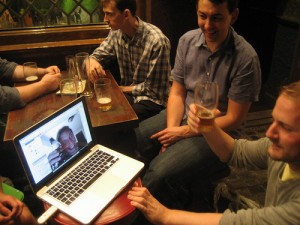I understand Jodi.org and the Jodi Art Collective as a medium for the people. In this day in age, there are many people who are fairly “tech-savvy” and are possibly able to code with ease, however, in the 1990’s, those who were so well versed in the Internet and its make-up were harder to find. Jodi.org was a Desktop Theatre piece which provided a voice to and for the greater population who could not see beneath the surface of the ominous Internet. By displaying screen grabs of coding and as described in Lecture 7: “Their aim was to deconstruct the interface of the Web and reveal the code hidden beneath the surface.”
Similarly, Women in Black in the Palace, as explored in the reading, “So Far and Yet So Close: Lessons Drawn from Telematic Improvisation” by Adrienne Jenik, is a place for Israeli women to anonymously express themselves regarding violence towards Palestinians by the Israeli state. By holding these vigils on a public space where the users are solely known by avatars, it becomes much more accessible to the greater public. As quoted in the reading:
“The Palace was an early, free, easy to use and access online visual chat-space where ‘rooms’ (appearing in discrete graphical windows) were configured within ‘palaces’ (server-hosts). People from anywhere in the world could appear as avatars and relate to one another through text, movement and other forms of expression. One’s visual appearance on screen (known as an avatar) could be chosen from a menu of offerings, or could be created from any bitmapped image and uploaded (an affordance not possible in most contemporary chat spaces at that time). As a result, the crude, cartoon drawn and photography-based bitmapped images worn by the population resulted in an extremely heterogeneous visual effect.”
These cyberspace communities, such as Jodi.org become a form of Open Source Media as they are readily accessible and non-discriminatory.




